Four great places to get pork ribs in Los Angeles
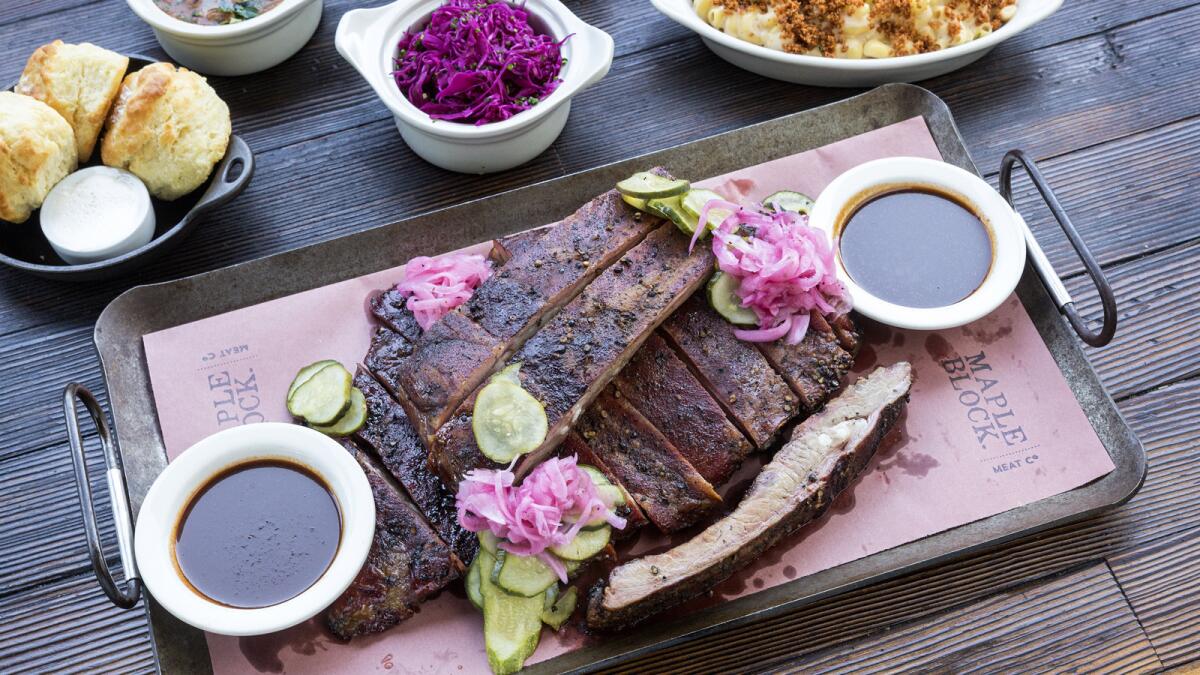
- Share via
This is not a story about how barbecue is a religion, or how it should adhere to a certain region, method or ideology. Because in Los Angeles, chefs tend to do things their own way, drawing inspiration from what seems like everywhere, with a respectful nod to those who came before them.
When it comes to pork ribs in this city — spares, tips, baby backs — the possibilities can be endless. From Filipino-style ribs in downtown L.A. to sauce-drenched baby backs in West Adams, there are ribs for every taste and persuasion. Here are four pretty spectacular versions. (You may notice that Bludso’s Bar & Que is not on this list, because it should go without saying that pitmaster Kevin Bludso’s pork ribs are always excellent.) If you feel we’ve forgotten your favorite pork ribs, please let us know in the comments.
Dr. Hogly Wogly’s Tyler Texas BBQ
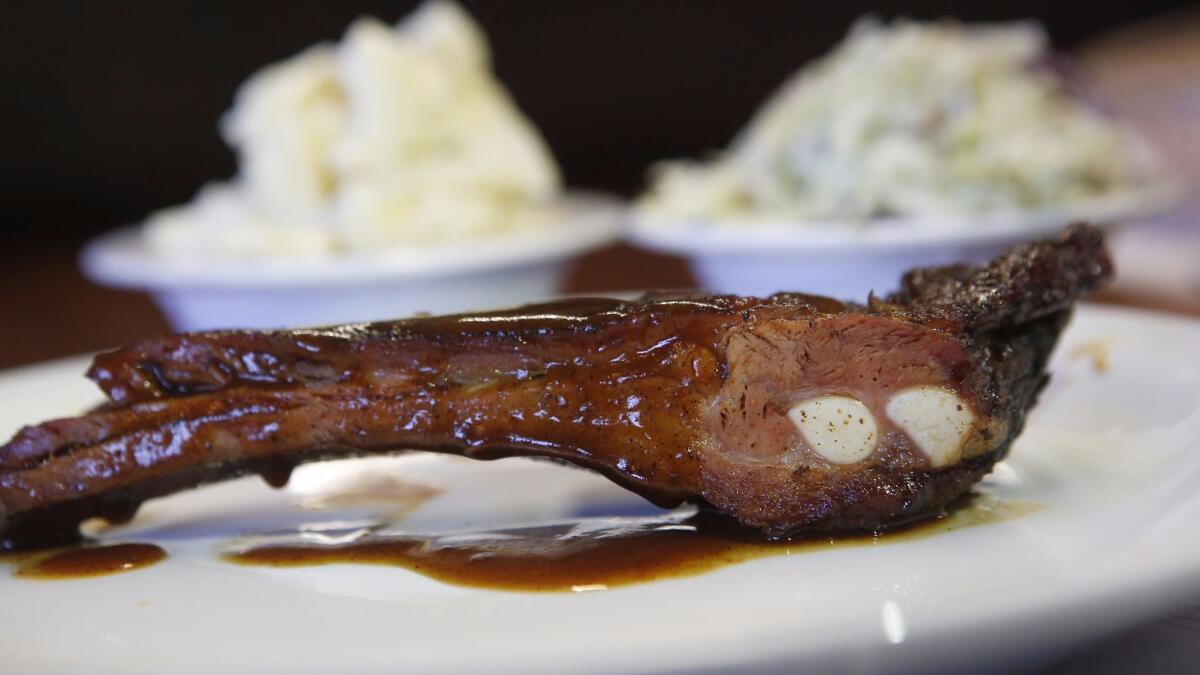
Before we get to the ribs, it must be said that there actually was a real Dr. Hogly Wogly. His name was Johnny Greene, he was a former Piggly Wiggly delivery boy from Texas, and because of his size, his wife called him Hogly Wogly. (He became Dr. Hogly Wogly when he became a pharmacist.) Greene opened the restaurant in Van Nuys in 1969, and when he died in the ’80s, his wife sold the restaurant to current owner Sam Lee, who says he hasn’t changed the original recipes.
The baby back ribs are brined in apple cider vinegar and salt, patted with a 12-ingredient dry rub, thensmoked in a brick pit oven with hickory and apple wood for about four hours. The ribs are dunked into a roasting pan of secret marinade, then cooked on the grill for a couple of minutes before service. The meat has a good smoke flavor and is tender enough to break apart with your hands. Your server will provide a red squeeze bottle of the restaurant’s barbecue sauce, which is on the thinner side, with a serious kick. You eat the ribs at a leather booth in the small, wood-paneled dining room that feels vaguely like a cabin in the woods. If there are leftovers, your server will pick up your plate and simply dump the remaining contents (sauce, garnish, meat and all) into a plastic bag, twist it into a knot, then hand it over in one seamless, swift motion. 8136 Sepulveda Blvd., Van Nuys, (818) 782-2480, www.hoglywogly.com.
JNJ Bar-B-Que and Burgers
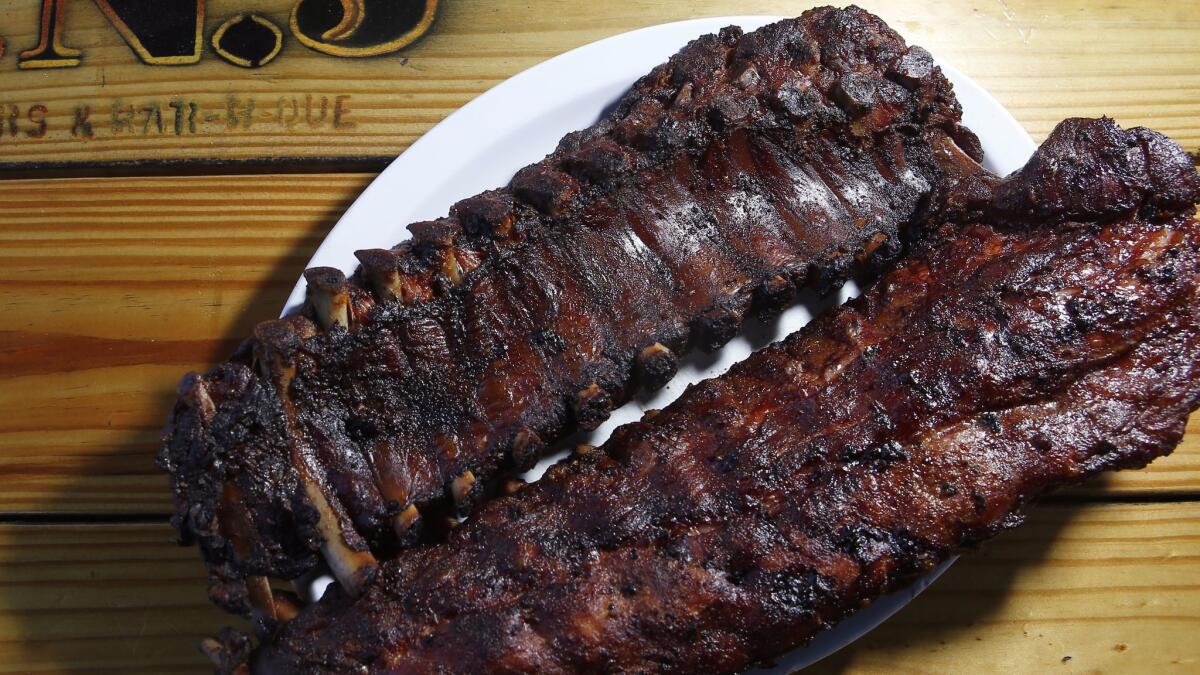
If you haven’t been to JNJ Bar-B-Que and Burgers before, just go slow and look for smoke billowing out of a small shack. This place, which has been around since the early ’90s, is actually two restaurants in one: a burger stand in front and a barbecue counter behind it. This is where pitmaster Nile Nelson, son of original JNJ owner Jay Nelson Jr., makes stellar pork ribs, brisket and hot links.
“Originally, my dad was barbecuing, and he was training me for like four years,” Nelson said of his father, who was from Louisiana and who died last year. “It’s a secret recipe.” When the monster smoker in the back is at 300 degrees (oak and hickory are used), Nelson seasons his baby back ribs with a secret dry rub, then throws them into the smoker for three to four hours.
The ribs are served in sauce, on a Styrofoam plate with either potato salad or beans and a couple slices of white bread. The sauce, which Nelson sells by the pint, is a tad sweet, a cross between the thinner sauces you may find in Memphis, Tenn., and the thicker, sweeter versions in Kansas City. Don’t forget a slice of the sweet potato pecan pie. 5754 W. Adams Blvd., Los Angeles, (323) 933-7366, jnj-bbq.com.
Maple Block Meat Co.
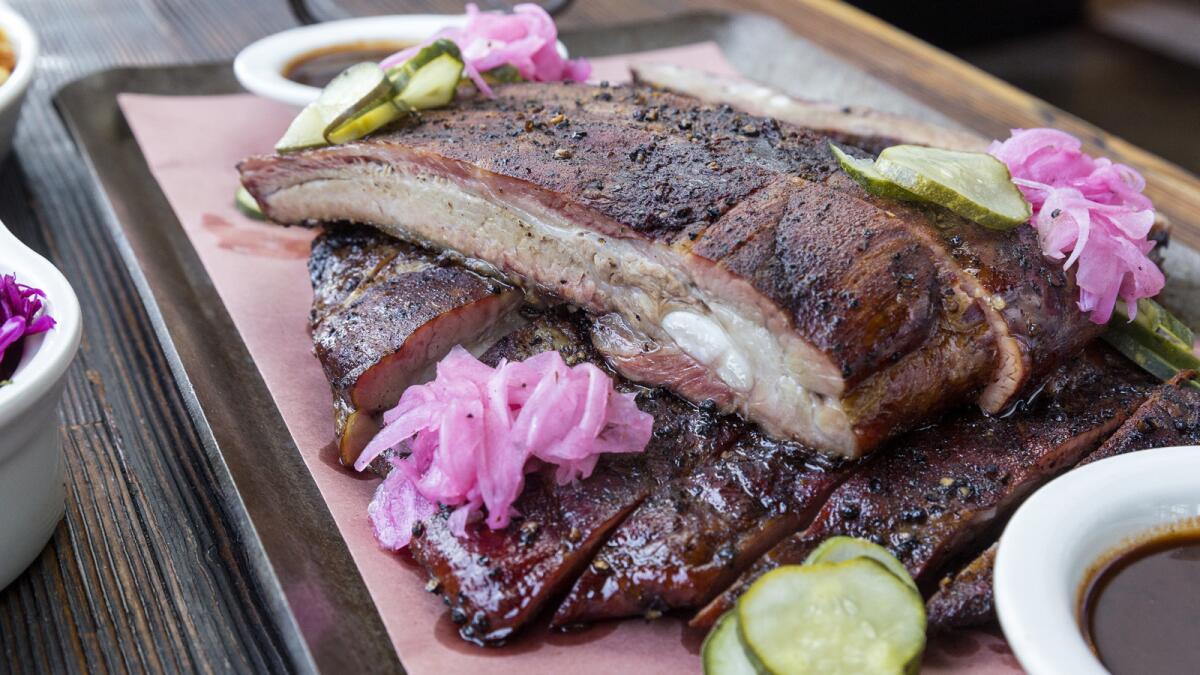
“We keep it simple. It’s barbecue.” This is how Maple Block Meat Co. chef Michael Liebel describes the barbecue process at the Culver City restaurant, which doesn’t really adhere to any particular region or style. First, the spare ribs are trimmed, then rubbed with salt, sugar, pepper and some other stuff the chef would rather keep to himself. They’re then smoked with peach wood for around three hours in a small smoker in the kitchen.
Liebel lived in South Carolina for a decade and says he’s been making barbecue since he was 18. Also behind the barbecue at the restaurant is chef Adam Cole, who lived in Georgia, Texas and North Carolina and worked as a butcher at the now-closed Lindy and Grundy.
If you get the ribs plate (get the ribs plate), the ribs are served dry on a metal tray with two sides and two small cups of sauce. Both sauces have a sharp vinegar tang, and a distinct earthiness from the addition of coffee grounds. (The spicier of the two also includes Sriracha.) The smoke on the ribs cuts to the bone, and there’s plenty of bark (the layer of rub that sticks to the meat). With its brick facade, exposed beams and plaid-clad waitstaff, you may be tempted to label this place hipster barbecue. Please don’t. 3973 Sepulveda Blvd., Culver City, (310) 313-6328, www.mapleblockmeat.com.
The Park’s Finest
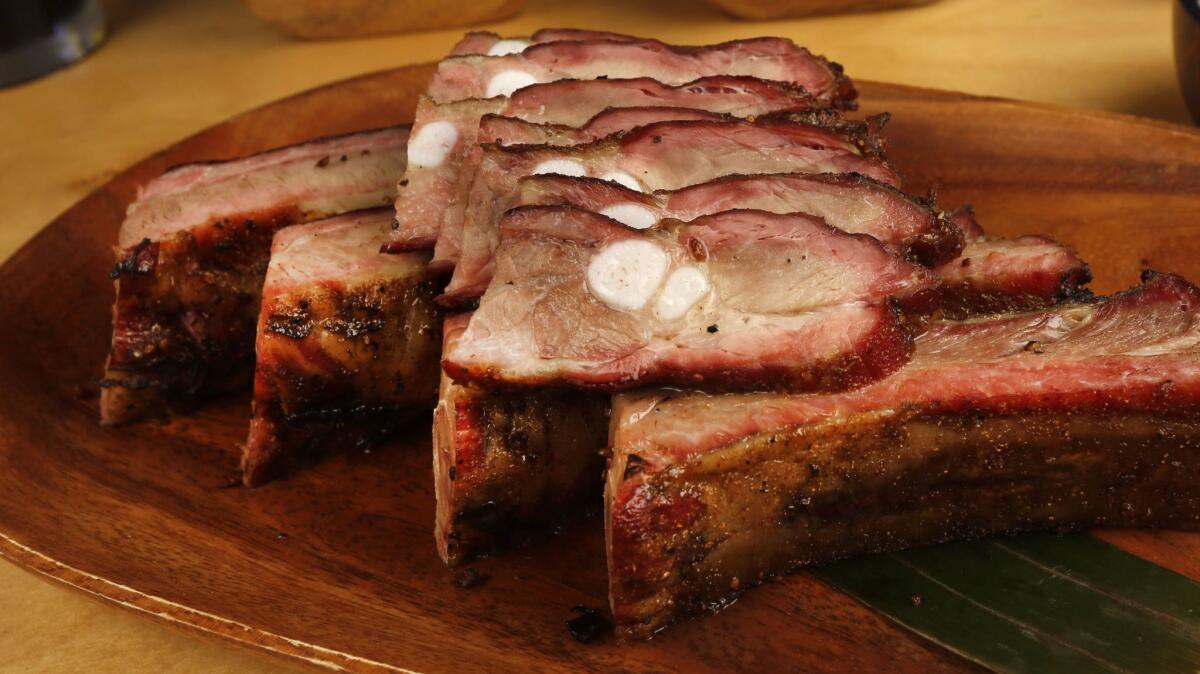
Johneric Concordia, owner of the Park’s Finest BBQ, just west of downtown L.A., used to trail his father at family barbecues in Echo Park, hoping to be put in charge of a single piece of meat; one he could watch over during the course of a barbecue, then eventually eat. When Concordia opened the Park’s Finest with a couple friends in 2009, he intended for it to be a catering service that would supply the nearby community with the kind of Filipino-slanted barbecue he grew up on. In 2012, he opened the brick-and-mortar and has been serving some of the best pork ribs in the city since, made in a pair of smokers he calls Lucy and Ricky.
Concordia uses a three-step process to flavor the ribs. The first includes a layer of pink Himalayan salt. He then adds a pepper blend that includes white and black peppercorns, Cayenne pepper and chile flakes. The third layer is a mix of garlic and onion — powdered, granulated and minced. The meat then rests for two to three days in the walk-in before being loaded into a smoker with pecan and alder woods, to cook for eight hours. “Pecan has a nice balance of nuttiness, while alder is what people use in the Pacific Northwest for smoking salmon,” said Concordia.
There are three sauces: vinegar, white horseradish and tomato-based. The latter was inspired by Concordia’s dad’s original sauce, which dates from his time in the U.S. Navy. The sauce consisted of what was in the ship’s pantry, including soy sauce, garlic, pineapple and brown sugar. Concordia’s version includes coconut milk and yellow chiles. “He first didn’t approve of it,” Concordia saidof his sauce. “But then he gave his head nod.” 1267 W. Temple St., Los Angeles, (213) 481-2800, theparksfinest.com.
ALSO:
11 sangria recipes to cool you off this summer
Chillable red wines for your summertime drinking pleasure
A brief history of pinquito beans, a staple of Santa Maria barbecue, plus a recipe
Eat your way across L.A.
Get our weekly Tasting Notes newsletter for reviews, news and more.
You may occasionally receive promotional content from the Los Angeles Times.








